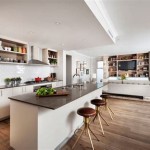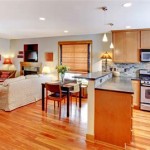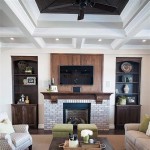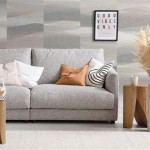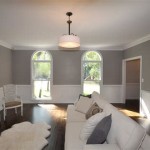Illuminating Grand Spaces: Choosing the Right Lights for High Ceiling Living Rooms
High ceiling living rooms offer a sense of spaciousness and grandeur, creating a dramatic and inviting atmosphere. However, effectively illuminating these spaces presents unique challenges compared to rooms with standard ceiling heights. Proper lighting design is crucial not only for functionality but also for accentuating the architectural features and overall aesthetic of the room. Failing to address the specific needs of a high ceiling can result in a poorly lit space, feeling both dim and overwhelming.
The key to successful lighting in a high ceiling living room lies in understanding the relationship between light output, fixture placement, and the room's architectural design. Utilizing a combination of lighting types, strategically positioned, can create a well-balanced and visually appealing environment. This article explores various lighting options and considerations for effectively illuminating high ceiling living rooms, ensuring both functionality and aesthetic appeal are achieved.
Understanding the Lighting Challenges of High Ceilings
The primary challenge with high ceilings is the increased distance between the light source and the areas requiring illumination. This distance significantly reduces the light intensity reaching the floor and furniture, potentially resulting in a dimly lit and unwelcoming space. Furthermore, a single overhead fixture is unlikely to provide adequate illumination for the entire room, leading to uneven light distribution and shadows.
Another challenge is the potential for glare. When lights are positioned too high, they can create uncomfortable glare, especially if they are not properly diffused or shielded. This issue can be exacerbated by reflective surfaces, such as polished floors or large windows. Careful selection and placement of lighting fixtures are essential to minimize glare and ensure comfortable viewing angles.
Finally, aesthetic considerations are paramount. The chosen lighting fixtures should complement the room's style and architectural features. They should be visually appealing and contribute to the overall design aesthetic, rather than detracting from it. Selecting the appropriate scale and style of fixtures is crucial to maintaining visual harmony within the space.
Key Lighting Strategies for High Ceiling Living Rooms
To effectively illuminate a high ceiling living room, a layered lighting approach is often recommended. This involves combining different types of lighting to provide both ambient, task, and accent illumination. By layering light sources, the room can be evenly illuminated, and specific areas can be highlighted for functionality and visual interest.
Ambient lighting provides the overall general illumination for the room. This can be achieved through various fixtures, including chandeliers, pendant lights, recessed lighting, and track lighting. The goal is to create a soft, even glow that illuminates the entire space without harsh shadows.
Task lighting provides focused illumination for specific activities, such as reading, working, or cooking. This can be achieved through floor lamps, table lamps, and under-cabinet lighting. Task lighting should be bright enough to provide adequate illumination for the intended activity without causing glare or eye strain.
Accent lighting is used to highlight architectural features, artwork, or other decorative elements. This can be achieved through spotlights, track lights, and picture lights. Accent lighting adds depth and dimension to the room, creating visual interest and highlighting focal points.
Specific Lighting Fixtures for High Ceiling Applications
Selecting the right lighting fixtures is critical for achieving optimal illumination in high ceiling living rooms. Several fixture types are particularly well-suited for these spaces, each offering unique benefits and aesthetic qualities.
Chandeliers are a classic choice for high ceiling living rooms, instantly adding elegance and grandeur. When selecting a chandelier, consider its size and scale in relation to the room. A chandelier that is too small will be visually underwhelming, while one that is too large can overwhelm the space. The height of the ceiling will influence the appropriate size and length of the chandelier's drop.
Pendant lights are another popular option, offering a more contemporary look than chandeliers. They can be hung individually or in clusters, providing both ambient and accent lighting. Pendant lights are available in a wide range of styles and materials, making it easy to find options that complement the room's décor.
Recessed lighting is a discreet and versatile option for providing ambient illumination. Recessed lights can be strategically placed to provide even light distribution throughout the room. They are particularly useful for highlighting architectural features or artwork. Dimmable recessed lights offer flexibility in controlling the overall light level.
Track lighting is a flexible option that allows for adjustable illumination. Track lights can be used to provide both ambient and accent lighting, making them ideal for highlighting specific areas or objects. The individual lights can be directed to focus on artwork, architectural details, or furniture groupings.
Floor lamps and table lamps offer a more localized source of illumination, providing task lighting and adding warmth to the room. Floor lamps are particularly useful for illuminating seating areas, while table lamps can be placed on side tables or consoles to provide focused light for reading or other activities. The lampshade material and design can influence the color and intensity of the light.
Wall sconces can be used to add a decorative touch and provide supplementary lighting. They are particularly useful for illuminating hallways, entryways, and other narrow spaces. Wall sconces can also be used to highlight artwork or architectural details.
Practical Considerations for Lighting Installation
In addition to selecting the right lighting fixtures, several practical considerations are important for successful installation. These include wiring, ceiling support, and dimmer switches. Proper planning and professional installation are essential to ensure safety and optimal performance.
Wiring is a crucial consideration, especially in older homes. It is important to ensure that the existing wiring is adequate to support the new lighting fixtures. If necessary, a qualified electrician should upgrade the wiring to meet the demands of the new lighting system. Adequate grounding is essential for safety.
Ceiling support is another important consideration, particularly for heavy fixtures such as chandeliers. The ceiling must be able to support the weight of the fixture without sagging or collapsing. If necessary, additional support may need to be added to the ceiling structure. Consult with a structural engineer or qualified contractor to assess the ceiling's load-bearing capacity.
Dimmers offer flexibility in controlling the light level and creating different moods. Dimmers can be installed on most types of lighting fixtures, allowing for adjustments to the brightness of the light. This can be particularly useful in living rooms, where different lighting levels may be desired for different activities. Dimmers can also help to save energy by reducing the amount of power consumed by the lights.
Finally, consider the energy efficiency of the lighting fixtures. LED bulbs are a highly energy-efficient option that can save money on electricity bills and reduce environmental impact. LED bulbs also have a longer lifespan than traditional incandescent bulbs, reducing the need for frequent replacements. Ensure the chosen bulbs are compatible with the dimmer switches if dimming functionality is desired.
Properly illuminating a high ceiling living room requires careful planning and consideration of various factors, from fixture selection to installation. By employing a layered lighting approach, choosing appropriate fixtures, and addressing practical considerations, the space can be transformed into a well-lit, inviting, and aesthetically pleasing environment which shows every corner of the living room.

25 Of The Best High Ceiling Chandelier Ideas Lightopia

Sophisticated Living Room Design High Ceiling Modern Rooms
Lighting Solutions For High Ceilings Randall Whitehead

Lighting Ideas For High Ceilings

10 High Ceiling Living Room Design Ideas Light Fixtures Interior

17 High Ceiling Light Fixture Ideas To Change Your Space

Lighting Techniques For High Ceilings Roman Electric

Lighting For Tall Ceilings Byhyu 190

25 Of The Best High Ceiling Chandelier Ideas Lightopia

Large Light Fixtures For High Ceilings Color Cord Company

